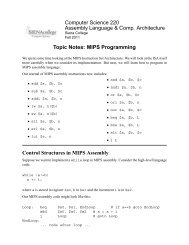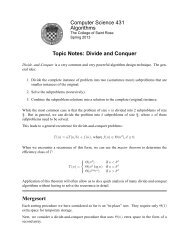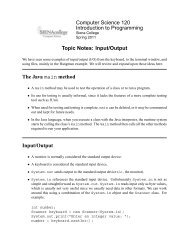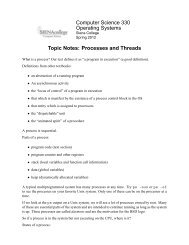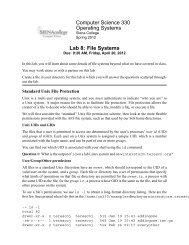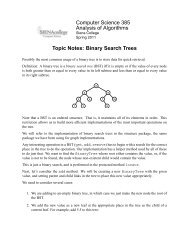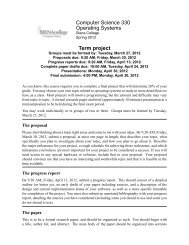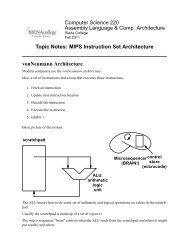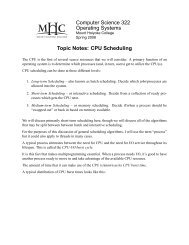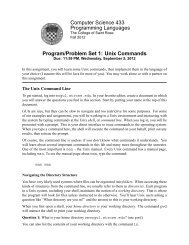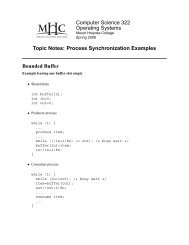Topic Notes: Process Synchronization - Courses
Topic Notes: Process Synchronization - Courses
Topic Notes: Process Synchronization - Courses
You also want an ePaper? Increase the reach of your titles
YUMPU automatically turns print PDFs into web optimized ePapers that Google loves.
CS 322 Operating Systems Spring 2008A monitor has a special property that at most one process can be actively executing in its methodsat any time. Mutual exclusion everywhere inside the monitor!But if only one process can be in, and a process needs to wait, no other processes can get in.So an additional feature of monitors is the condition variable. This is a shared variable that hassemaphore-like operations wait() and signal(). When a process in a monitor has to wait ona condition variable, other processes are allowed in.But when happens on a signal? If we just wake up the waiting process and let the signalling processcontinue, we have violated our monitor’s rules and have two active processes in the monitor. Twopossibilities:• Force the signaler to leave immediately• Force the signaler to wait until the awakened waiter leavesThere are waiting queues associated with each condition variable, and with the entire monitor forprocesses outside waiting for initial entry.Note that monitors are a language construct. They can be implemented using OS-provided functionalitysuch as semaphores.Also note the similarity between these monitors and Java classes and methods that use the synchronizedkeyword.25




